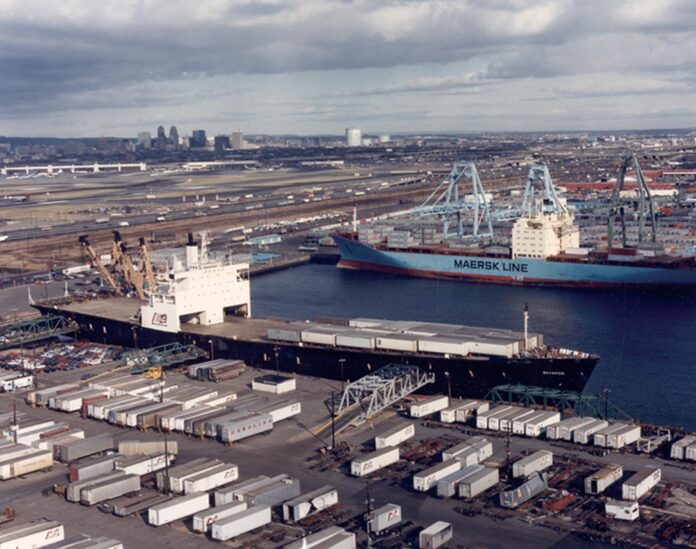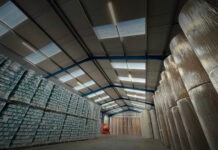

During September’s Tissue & Paper Bangkok exhibition and conference, Moore & Associates Founder Bill Moore discussed the latest trends impacting the global tissue markets. Here, TWM summarises the key findings.
Analysis of global recovered paper and recycled fibre pulp market
The use of recycled fibre pulp (RCP) in tissue production – produced via the processing of recovered paper – today makes up around 38% of the total fibres going into global tissue production, down from the peak of over 50% in 2000. But across all grades, the demand for recycled wood fibres has never been higher, and shows no signs of abating, while new primary fibres must always be coming into the supply chain in order to meet demand.
In 2017, the government of China launched its Operation National Sword policy to monitor and more stringently review recyclable materials imports, and as of 2021 a ban on imports of recovered paper came fully into effect. Before the policy, China was importing the vast majority of recyclables from North America and Europe for the past two decades. As of 2021, its exit from the market came fully into effect with the launch of the policy halting the import of plastics and other materials destined for its recycling processors, prohibiting the importation of 24 types of recyclable commodities beginning at the end of 2020.
So how has the global recycled paper sector changed since China’s complete exit from the market in 2021? Looking at the changing patterns in global recovered paper demand for the last few years, in the US saw a growth in demand of 3m tonnes from 2019 to 2021 to 35 m tonnes. Over that same time period, China’s demand for recovered paper decreased by 13 tonnes to 68m tonnes in 2021, Other Asia’s demand grew by 2m tonnes to 50m tonnes, and Western Europe’s Paper for Recycling (PfR) use declined by 3m tonnes to 48m tonnes.
Going forward to 2025, US recovered paper (RCP) demand is expected to grow by 6m tonnes from 2021, for the same time period, China’s RCP demand will grow 8m tonnes, Other Asia 11m tonnes, and PfR use in Europe will grow 3m tonnes. Despite the continued growth RCP demand from China, there is a decided shift to wood fibre-based projects for containerboard. The use of recycled fibre for tissue production is declining for four reasons:
• The downturn in the world’s use of printing and writing papers, thereby limiting supplies of the recovered office paper grades;
• Yields on recycled fibre have been steadily declining;
• Processing, chemical and residual’s disposal costs have been increasing;
• Abundant supplies of bleached tropical hardwood pulps that once went primarily into printing and writing papers are now more used in tissue production.
Recovered fibre tissue use trends by regions
Recycled fibre-based tissue is more prevalent in certain markets: North America (US, Canada, and Mexico), Europe, Middle East, and developed Asian countries (Japan, Korea, etc). Regional trends in recycled fibre use in tissue show that there is a slow decline in North America, recycled fibre use is declining in Europe and the Middle East, and a slow decline in developed Asia.
China’s tissue business is growing largely with virgin fibre (vs newsprint and paperboard sectors, which rely heavily on recycled fibre).
CHINA
Some reasons why China banned RCP imports
• China did not want to be bringing other nation’s ‘waste’ into their country – really somewhat of a greenwashing effect to placate their people on China’s poor environmental conditions.
• They wanted to spur local collection of recyclables – which has happened.
• They wanted to incentivise other nations to manage they own recyclables at home. An unusual motivation that has actually worked out – the US and Europe have been adding capacity to consume the recovered paper grades that used to go to China.
Global recovered paper flows
What we have seen is that there have been a number of effects on China’s paper industry as a result of its action, many of which are detrimental. It has seen substantially higher Old Corrugated Containers (OCC) and Mixed Paper prices than anywhere in the world – good for collectors/processors, not so good for paper mills. It has also seen that recycling infrastructure for collection and processing is booming in China, but the local OCC and other paper fibres are inferior quality (fibre strength wise) to US RCP.
Container board and corrugated box prices have risen, especially for export quality boxes. Higher outbound ocean container freight costs have also occurred because container boxes are not coming in with recyclables and instead must be routed through other Asian container hubs and often higher level of deadheading inbound.
US and Europe exports of RCP/PfR that once went to China have decreased and redistributed to other Asian markets. Perhaps most significantly we have also seen Chinese mill company expansions outside of China, particularly in Southeast Asia.
China’s Source of Recovered Paper
China’s source of recovered paper also makes for interesting viewing. RCP net imports reached a peak 32.3m tonnes in 2015, falling to 28.4 in 2017, 18.8 in 2018, 11.6 in 2019, and 6.2 in 2020. In comparison, domestic RCP collection was 53.8m tonnes in 2015, 61.6 in 2017, 62.8 in 2018, 63.9 in 2019 and 59.2 in 2020.
Alternatives to importing RCP into China
• Increase domestic RCP collection – but there aren’t enough boxes in the China waste stream for the demand. This will change somewhat as China shifts its focus to domestic economy growth.
• Pulp – buy more unbleached kraft pulp. Globally volume is limited volume, an expensive grade. China supporting expansion of grade capacity, especially in Siberia, Nine Dragons UKP pulp mill in Maine. UKP imports in 2017 were 640,000 MT, 2020 – ~1 million MT, and 1st H 2022 – 771,000. Sun Paper is building a UKP mill in China.
• Converters importing linerboard and medium – imports of containerboard have increased sharply in the last three years. CB imports were one million MT in 2016 and rose to > seven million MT in 2020, forecasted to be > nine million MT in 2022.
• Import RCF pulp from US or other Asia/Pacific Rim countries, especially Southeast Asia.
• Virgin fibre – China is planting trees (mostly tropical hardwoods) and importing softwood. The number of virgin pulping projects (about a dozen of them – mostly semi-chem, but some kraft) is accelerating.
• Increased use of ‘alternative’ fibres: bamboo, bagasse, wheat straw – but these are almost all very short fibres, possibly suitable for medium, but not linerboard.
Chinese fibre sources in 2017 include 56m tonnes of domestic RCP collection, 26m tonnes of RCP imports, 20.2m tonnes of virgin pulp production, 9.5m tonnes of domestic pulp production, and zero recycled pulp imports. In 2021, it saw 60.1m tonnes of domestic RCP collection, 24m tonnes of virgin pulp imports, 10m tonnes of domestic pulp production, 3m tonnes of recycled pulp imports and 0.4m tonnes of RCP imports.
In 2015, US recovered paper exports to China were 15.7m tonnes per year, dropping to 12m tonnes in 2017, 8.3m tonnes in 2018, 5.8m tonnes in 2019, 4.2 in 2020 and zero in 2021.
Changes to US paper recycling caused by China ban
In terms of the US mixed paper category consumption market size, in 2021 4.1m tonnes were recorded for domestic US mill demand, while 2.6m tonnes of demand were exported. In 2025, it is forecast to be 5.2m tonnes, compared with 2.1m tonnes of export demand. China’s import ban has also impacted pricing of US mixed paper prices: a high of $117 was recorded in 2011, and this has since fallen to $50 in 2015, risen to $75 in 2017, fallen to -$2 in 2019, and then risen again to $75 in 2021.
US OCC exports by destination, 2018 and 2021
2018 ~12.5m tonnes
China received 49% of US OCC exports, India 15%, Vietnam 6%, S. Korea 6%, Indonesia 5%, Taiwan 5%, all others 8%.
2021 ~10.5m tonnes
India received 20%, Mexico 10%, Indonesia 12%, Taiwan 10%, Thailand 15%, Malaysia 7%, South Korea 6%, all others 13%.
Other Asian countries acceptance of US mixed paper
Other Asian countries have asked themselves – if it is not good for China to import Mixed Paper why should it be good for us?
• Vietnam will no longer take imports of Mixed Paper as of the end of 2021.
• Indonesia and India have been back and forth on the level of prohibitives they will allow in Mixed Paper imports and inspections needed. Indonesia has settled in at 2% prohibitives.
• The latest country to announce a ban on imports of Mixed Paper is Malaysia.
• The above four countries are/were large importers of Mixed Paper from North America.
• There is some consensus in Asia that the prohibitives level in Mixed Paper should be capped at 0.5 to 1%, very difficult to obtain economically from North American MRFs.
• North American domestic mills are in a much better position to use Mixed Paper – especially if the MRFs can get the prohibitives level down to 2 – 4% range.
JAPAN
For the first half of 2022, exports of RCP were down ~18% from the same period in 2021 at just over one million tonnes. Domestic RCP consumption was down 0.6% from the same period in 2021 at just about eight million tonnes.
EUROPE
Recycled fibre use in Europe paper and paperboard production
European Paper Mill Raw Material Consumption:
Paper for recycling 49.5%
Integrated Pulp – 21.6%
Market Pulp 17.8%
Non-fibrous material 11.1%.
Europe recycled fibre utilisation by grade
50.7m tonnes: Containerboard & Kraft 59%, Mixed Grades 15%, Newspapers & Magazines 13%, Other grades, including High Grades 9%
What is recycled fibre market pulp?
Recycled fibre pulp (RCF) is produced using recovered paper (RCP) that has been processed through state-of-the-art fibre stock preparation systems, formed, and then dried or dewatered and shipped in bales or rolls. It is a new grade of pulp which did not exist before 2017 and is now a small but still growing market at ~3m tonnes per year of global capacity.
Global virgin fibre Unbleached Kraft pulp capacity is ~ 4m tonnes per year and is also increasing.
In comparison, global bleached market pulp production is ~50m tonnes.
Multiple RCF pulp grade options include:
• ‘Brown’ pulp, suitable for linerboard
• ‘Grey’ pulp, suitable for boxboard and medium
• Brown ‘Dry’ pulp make from corrugated box cuttings (DLK)
List pricing for RCF pulp over the last two years has been between $450 and $525 (USD)/tonne, but recently falling to as low as $400/tonne.
Pulp form
There are four types of RCF pulp;
• Baled dried pulp – the predominant form: standard way most pulps are produced and handled by consuming mills.
• Rolls – can be produced on existing paper board machines. Major drawback is handling at the consuming mills – has to be cut/slabbed to put in the pulper.
• Dry pulp – made from shredded corrugated box cuttings (DLK).
• Wetlap – lowest cost to produce: two significant downsides – transit time has to be kept to a minimum (bacteria growth) and cost of shipping a lot of water.
xiTypical ‘safe’ transit time for wetlap pulp is about three weeks.
Some of the new wetlap projects indicate their pulps are good for up to seven weeks of transit time.
China imported 1.34m tonnes of RCF pulp in the first half of 2022, an increase of almost 20% over the same period in 2021. Although there has been some recycled pulp production activity in India and the US, Southeast Asia has had the most RCF pulp project activity.
Operating RCF pulp mills (capacity numbers are metric tonnes per year): –
• Nine Dragons, Bentong, Malaysia, 480,000 – wetlap
• Sun Paper, Xepon, Laos, 400,000 – air dry pulp
• Lee & Man, Bago, Myanmar, 340,000 – wetlap
• Lee & Man, Selangor, Malaysia, 400,000 – wetlap – Shanying, Thailand, 300,000.
Lee & Man, Nine Dragons and Jingxing Holdings have three more Malyasian RCF pulp projects coming by the end of 2023.
To fibre the many Malaysian new mills, the country’s imports of US OCC in the first half of 2022 are up over 40% from 2021. One strategy that has appeared: Chinese mill company RCF pulp projects are being built with the plan being to convert the operations to containerboard as the in-country demand warrants it
Chinese mill company RCF pulp activity in the US
After a flurry of announcements of six RCF pulp mill projects in the US only two have come to fruition:
• ND Paper (Nine Dragons) has started up two of a planned four operations
• Shanying International cancelled their project – Century Sunshine cancelled their project.
There have been some limited roll and baled unbleached RCF pulp produced on existing paper machines in the US.








































